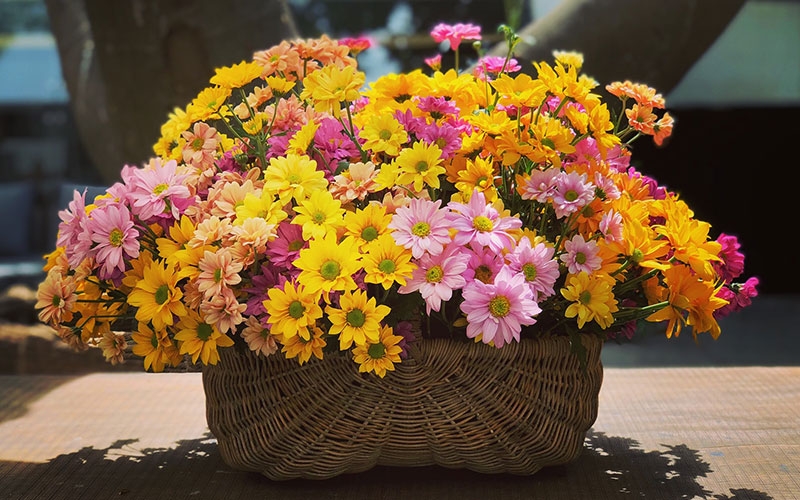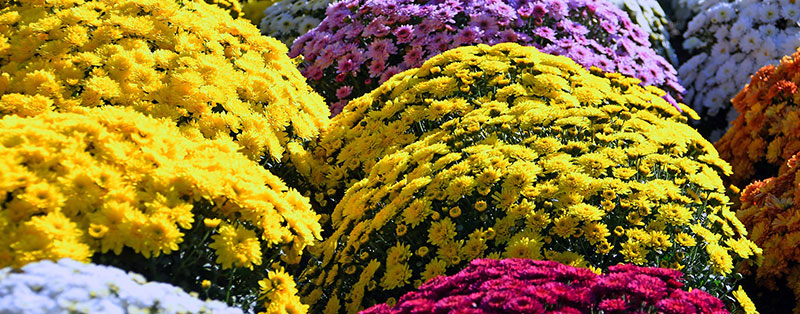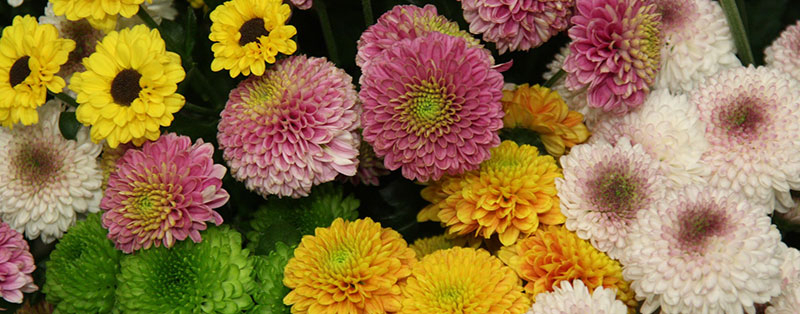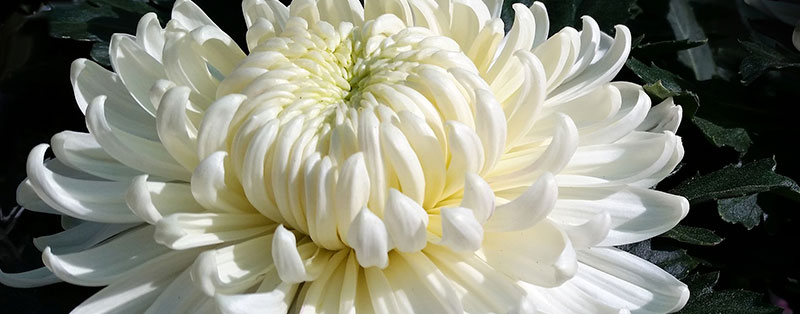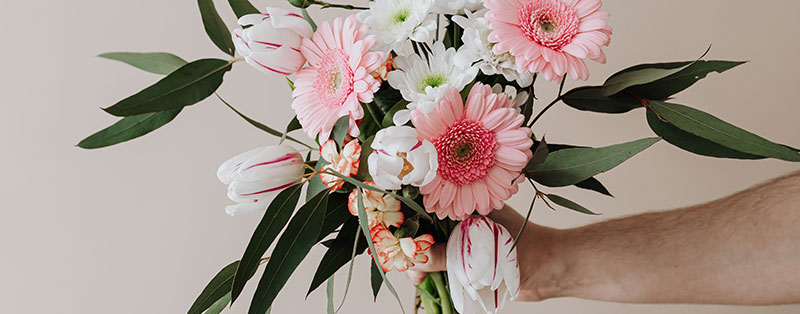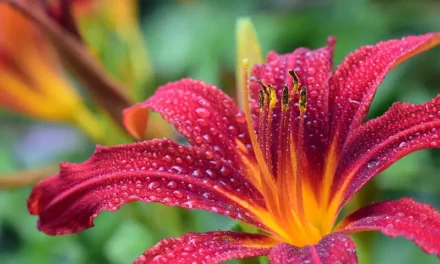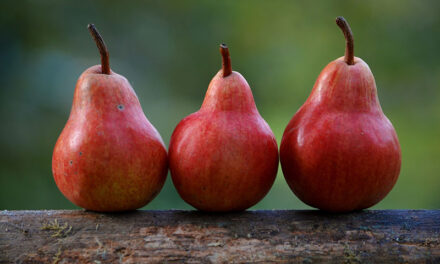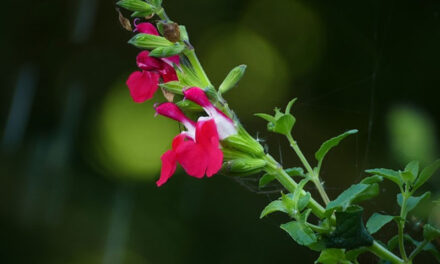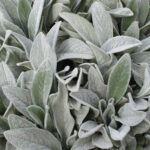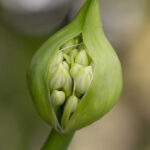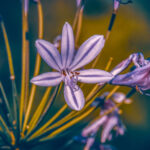Chrysanthemums, or garden mums, are incredibly versatile flowers. They look wonderful as a houseplant in your home, a potted plant on your terrasse, inside a beautiful vase as cut flowers or as a great addition to your vibrant garden. Except for blue, chrysanthemums come in all colors of the rainbow, so there will always be a color fit to your interior or garden.
Cushion chrysanthemum
The most common type of chrysanthemum is called the cushion chrysanthemum. The cushion chrysanthemum flowers beautifully during autumn in a round, bushy form. This plant flowers continuously, so you get to enjoy it until the first frost outside. The cushion mum is an easy plant and very simple to take care of. All it needs is sunlight and a bit of water so place it in a good spot through to full sun on your terrasse or garden and make sure to check the soil of the plant and water it regularly. Note that on rainy days the rainwater may not always reach the soil which can cause it to dry out. The full bunch of flowers stop the water from reaching the roots, so you may need to water them on these days too. Crazy, right?
Would you like to enjoy your cushion mums even longer? Then keep an eye on the weather forecast and temporarily move the plant indoors in case of low temperatures or freezing at night.
Other than the cushion chrysanthemum, you also have the pyramid shaped chrysanthemum or the chrysanthemum on a stem. The pyramid shaped chrysanthemum is grown in such a way that it becomes taller, similar to the shape of a conifer tree. The chrysanthemum on a stem is a cushion mum on a small stem. The height of this cushion mum on a stem is often around 70 to 90 cm.
Chrysanthemum flower
The chrysanthemum flower comes in many shapes and sizes. You have chrysanthemums with large flowers, small flowers, with a wispy or disbudded bulb, the Santini chrysanthemum with its fascinating inflorescence and the classic Spray chrysanthemum.
The Santini chrysanthemum is a playful, color-rich and vibrant chrysanthemum with a very special character. It is recognized as a chrysanthemum yet very innovative with its many little flowers which look great in bouquets too.
The flower of the chrysanthemum is available in a number of different color variations. During spring and summer you’ll find many yellow, pink, lilac and lime-green chrysanthemums. Brown and warm red shades during autumn and when it’s winter you can get them in white and deep pink colors.
The size of the chrysanthemum flower varies from 1 to upto 14 cm. The flower is made of tubular flowers in the center while surrounded by flat petals.
Deadheading Chrysanthemums
To ensure the longevity of your chrysanthemum we recommend cutting off the spent flowers, this technique is called deadheading. By removing the parts which start to fade you stimulate the production of new buds so you can enjoy your garden mum for even a longer period of time.
Cut flower chrysanthemums
The chrysanthemum is one of the most widely used cut flower in the world. Due to the many different shapes and colors of the flower, it is suitable for practically all types of bouquets: from classic to modern. The flower is available as a cut flower all year round.
Chrysanthemum magnum
I would like to mention the chrysanthemum magnum, or magnum mums, separately. This type has large, striking white flowers with a beautiful center of a fresh green heart. The Magnum is very strong and the flowers know practically no molting.
Wild chrysanthemum
The wild chrysanthemum is a very easy grower. The color of this type is warm-yellow and they come in single and/or double flowers. The wild mum has fine foliage and an abundance of flowers. The height of this species is 80 cm and can easily be used as a cut flower.
Chrysanthemum cuttings
You can propagate chrysanthemums by dividing, tearing or cutting. Cut the top from non-flowering, slightly lignified stem parts during spring. Do the cutting diagonally and remove the leaves at the bottom. Stick your cutting in cutting soil. Do you have some rooting powder lying around? Use this, it promotes the root formation of your cutting. The cuttings are very fragile during the first few days, mist them carefully or shield the cuttings with a cloth to maintain the humidity level. Place your cuttings in a light and frost-free spot.
After 14 days the roots have formed and you can start potting your cuttings. Use well-draining soil with some clay or loam in it. Place your plants in a light spot and let them grow nicely. You can top young plants a few times to ensure that you get a nice full mum. The chrysanthemum will not flower until it has less than 12 hours of daylight for several weeks.
When it blooms, you can plant it outside or put it in a pot on your patio.
Hardy chrysanthemums
Not all chrysanthemums are hardy, just like the pot chrysanthemums. But the garden mums and autumn mums are always hardy.
To make sure that your chrysanthemum is hardy, we recommend the following:
- Plant the chrysanthemum outdoors in May. Your plant will have enough time then to root well and survive the winter.
- Choose a sheltered and dry place.
- Do not cut the spent flowers from your plant. They protect the plant from the cold.
- Cover the lower part with a layer of leaves or, for example, a shrub.
Did your plant survive the winter well? Trim the stems in the beginning of spring to a hand’s width above the ground. This will give the mums enough energy for the upcoming warm seasons.
Planting chrysanthemum
The planting month of the chrysanthemum is May. Choose a dry and sheltered spot for your plant and make sure it gets plenty of water. For a beautiful bloom, this plant needs a lot of water and ideally straight into the root ball. Even if it rains, you can continue to water the chrysanthemum, the dense leaves and flowers make it difficult for the rainwater to reach the root ball.
Chrysanthemum symbolism
Chrysanthemums are loved all over the world. The chrysanthemum symbolizes happiness, loyalty, honesty and friendship. It has a different symbolic meaning as it provides multiple types of symbolic value in different parts of the world.
In the Netherlands, for example, the flower symbolizes the months of autumn. If it’s your birthday during this season then you will receive a chrysanthemum bouquet more likely than in any other season. It is also a tradition to gift a chrysanthemum to couples who have been married for 12 years.
On the contrary, the flower is honored throughout Asia. It is a symbol of happiness and health there. In Japan the yellow colored mum symbolizes the sun and the light and has been declared a national symbol. And in China, the chrysanthemum is a symbol of nobility and durability, in addition to happiness. In France and Germany the white mum serves as a symbol of the truth.
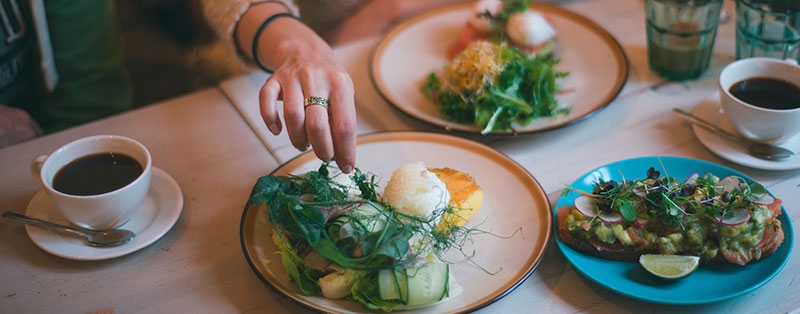
Edible chrysanthemum
Yes, you can eat it! Now I’m not recommending you to take the cut flower from your vase and start consuming it, but there are edible varieties of the chrysanthemum. The crown daisy, for example, is a chrysanthemum variety that is safe for consumption.
You can sow this plant yourself from late March till mid August. After a few weeks you can already harvest it as a large seedling. By harvesting large seedlings already at this time of the year, you give the other plants more space to grow. You can harvest the top of the older plants with leaves, excluding the flower bud.
The flower buds can be consumed with other leafy vegetables in a stir fry dish. The edible chrysanthemum has a very strong taste, so don’t use too much of it. I’ve never had it myself though, but I think it’s similar to what you have with coriander: you either love it or don’t like it at all.
Either way, enjoy your meal!

